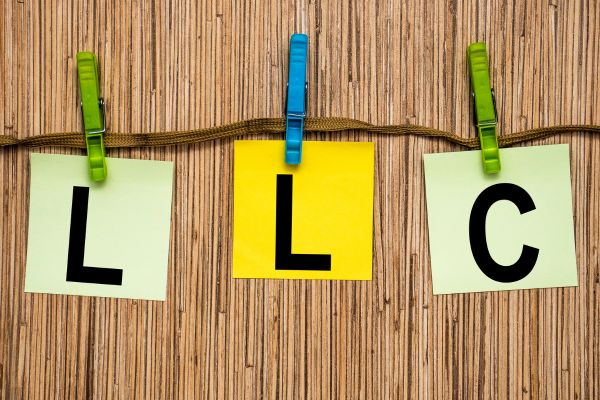If you’re planning to start or grow a business, having a solid plan is essential. But, where do you start? Many entrepreneurs find themselves at a crossroads, unsure of how to organize their ideas into a structured and actionable plan. That’s where a business plan template comes in handy! Not only does it provide a clear roadmap, but it also helps communicate your vision to stakeholders and investors. But how can you create a winning business plan? Don’t worry—I’ve got you covered! Let’s dive deep into everything you need to know about a business plan template, step-by-step.
What Is a Business Plan Template?
A business plan template is essentially a framework that outlines the key components of your business. It’s like a cheat sheet that guides you through the process of detailing your business’s objectives, strategies, market analysis, financial projections, and much more. The beauty of using a template is that it saves time and helps ensure you don’t overlook crucial elements.
Why Do You Need a Business Plan Template?
Whether you’re launching a startup or running an established company, having a business plan is vital for several reasons:
- Clarifies Vision and Strategy: A business plan template helps define your goals, mission, and strategies.
- Attracts Investors: A clear, well-structured plan is often the first thing investors look at before they even consider funding.
- Supports Decision-Making: It provides a reference point for making critical decisions.
- Guides Growth: As your business grows, a plan helps keep you focused on your objectives.
Key Components of a Business Plan Template Now that you know why a business plan is essential, let’s break down the main components every great plan should include.
1. Executive Summary
The executive summary is a snapshot of your business. Think of it as the hook that grabs the reader’s attention. It should include:
- Company Overview: What’s your business about?
- Mission Statement: What’s your purpose?
- Vision: Where do you see the business in five or ten years?
- Business Objectives: What are your short-term and long-term goals?
2. Company Description
In this section, you’ll dive into more detail about your business.
- Business Name & Location: Where are you operating?
- Legal Structure: Are you an LLC, corporation, or sole proprietorship?
- Industry: Describe the industry you’re in and how you fit into it.
- Unique Selling Proposition (USP): What sets your business apart from the competition?
3. Market Research and Analysis
You can’t operate a successful business without understanding the market.
- Target Audience: Who are your ideal customers?
- Market Size: How big is your potential market?
- Competitor Analysis: Who are your competitors, and what can you learn from them?
- Market Trends: What’s trending in your industry?
4. Organization and Management
Outline the structure of your business and the team that will drive it forward.
- Ownership Structure: Who owns the business?
- Management Team: Who are the key players, and what are their roles?
- Advisory Board: Do you have experts guiding your decision-making?
5. Product or Service Line
This is where you describe your offerings in detail.
- Products or Services: What are you selling?
- Development Stage: If you’re developing a product, what stage are you at?
- Research and Development: Are you investing in innovation?
6. Marketing and Sales Strategy
This section is all about how you’re going to get your product or service into the hands of your target market.
- Pricing Strategy: How will you price your offerings?
- Sales Process: How will you reach your customers?
- Marketing Channels: Will you rely on digital marketing, traditional advertising, or both?
- Customer Retention: How will you keep your customers coming back?
7. Funding Request
If you’re seeking funding, this section is where you’ll outline what you need and how you’ll use it.
- Amount Required: How much money are you asking for?
- Planned Use of Funds: What will you use the funds for (e.g., hiring, equipment, marketing)?
- Future Funding Requirements: Will you need additional funding down the line?
8. Financial Projections
This is the nitty-gritty of your business plan, especially if you’re seeking investment.
- Revenue Forecast: How much revenue do you expect to generate?
- Profit & Loss Statement: What’s your expected profit?
- Cash Flow Statement: How will money move in and out of the business?
- Break-Even Analysis: When will your business become profitable?
How to Customize Your Business Plan Template One of the biggest benefits of using a business plan template is that you can customize it to fit your needs. Here are a few ways to tailor it:
- Adjust the Layout: Every business is different, so feel free to rearrange sections based on your priorities.
- Use Industry-Specific Data: Incorporate statistics or trends relevant to your niche.
- Add Visuals: Charts and graphs can make financial data easier to digest.
FAQs About Business Plan Templates
- Do I need a business plan if I’m not seeking investors? Absolutely! A business plan is as much for you as it is for potential investors. It helps you stay focused, manage growth, and keep track of your goals.
- How long should my business plan be? There’s no strict rule, but it should be long enough to cover all the key areas. Typically, a solid business plan is between 15 and 25 pages.
- Can I revise my business plan after it’s completed? Of course! A business plan is a living document, meaning you should review and update it regularly to reflect your business’s current state and future goals.
- What if I’m unsure about my financial projections? It’s okay to start with estimates, but ensure they’re based on solid research. As your business grows, you’ll have more data to refine your projections.
Conclusion:
Creating a business plan may seem daunting, but using a business plan template simplifies the process. It provides you with a roadmap, helping you stay on track as you build and grow your business. Whether you’re just starting or looking to expand, a detailed business plan gives you the foundation for success. So, grab that business plan template and start charting your path to success today!
Authoritative Links:
- www.sba.gov/business-plan
- www.score.org/resource/business-plan-template
- www.entrepreneur.com/businessplan



